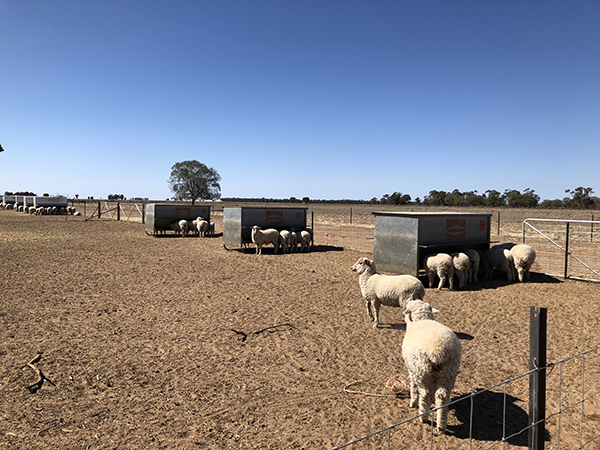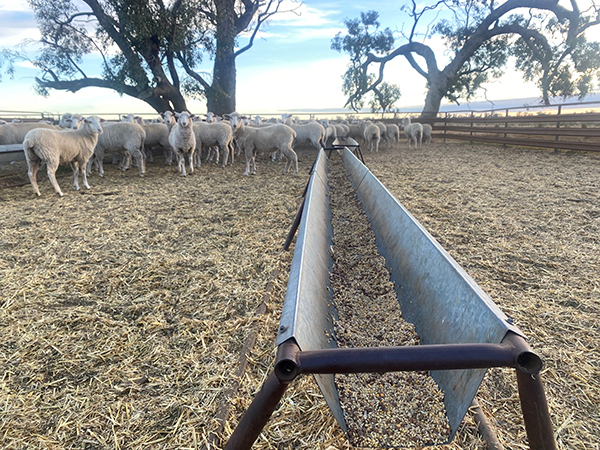 Jillian Kelly founded her consultancy business in 2022 after almost 20 years as a production animal veterinarian in the private and government sectors. She also runs a side-line cattle trading business. Image: Jillian Kelly.
Jillian Kelly founded her consultancy business in 2022 after almost 20 years as a production animal veterinarian in the private and government sectors. She also runs a side-line cattle trading business. Image: Jillian Kelly.
For producers in Coonamble, NSW, as for others around Australia, it took them by surprise when it suddenly dried up before Christmas of 2022. Veterinarian, Dr Jillian Kelly, of Animal Health and Nutrition Consulting, said by February 2023, the pasture was completely brown, and since then, the district has received below a third of the annual expected rainfall. Preparation and early decision making are key ways producers can cope with increasingly volatile weather patterns.
“Play the hand you’re dealt, if your pasture isn’t meeting your animals’ needs, you need to do something about it. Weight loss in livestock is fine for a short period, if it’s recognised, controlled and for a production outcome (e.g. in lactating breeders) but eventually if it doesn’t rain, you’ve got to make a decision – either feed them or sell them.
“In dry or variable environments, you have to make decisions early. This can avoid kilos of weight loss and retain kilos of feed per hectare,” Jillian said.
Informed decision making
Seeking expert advice and staying connected with community are important confidence boosters.
“There are good decisions, bad decisions, and no decisions – and no decision is by far the most costly in a dry time. A wait and see approach is not a good option under the current conditions,” Jillian said.
When considering destocking, feeding in the paddock or containment feeding, data is king.
“Put some figures around your decision. You’ll then have the evidence to back yourself even if you decide feeding isn’t feasible.
“For example, a 20kg lamb might only be worth $10–20 in the current market and it’s a hard decision to sell that for that price. However, to feed it through to a 55kg liveweight for slaughter on a grain ration is going to cost around $93.00 purely for the ration.
“There needs to be a lot of faith in the future lamb market to commit to this level of feeding and if this is going to take away feed and labour resources from breeding ewes, it may not be worthwhile,” Jillian said.
Decision making – points to considerThere are a series of decision points that need to be worked through and periodically reviewed alongside the economics of each situation, including your personal preference and risk profile. Some examples include: 1. Feed demand (stocking rate) is forecast to exceed feed availability (carrying capacity)
2. What avenue of reducing stocking rate is most preferable?
3. Under each method of reducing stocking rate, there are various considerations additional to the economics
|
Rumen key to resilient livestock
When containment feeding, carefully balanced rations will ensure optimal rumen health.
“Keeping the rumen microbes happy will keep animals functioning well and able to convert feed into beef, lamb, milk and foetuses,” Jillian said.
Getting rations right
Consulting a nutritionist will ensure your rations are fit-for-purpose. When containment feeding adult livestock, energy is the biggest productivity driver.
“People get tangled up thinking about protein, but energy is the first priority. Growing livestock need to lay down muscle, so protein becomes more important the smaller your animals are,” Jillian said.
Well balanced rations key to survival
Feed such as cereal grains, pulse grains or pellets contain high levels of energy or carbohydrates.
When carbohydrate enters the rumen, it becomes one of three types of volatile fatty acid through the rumen fermentation process. One of these is propionate – which produces a whopping 70% of blood glucose in ruminants, and this results largely from feeding starch-based grains. Grains such as wheat, triticale, maize, and barley contain high amounts of starch.
Particularly important during dry times is ensuring pregnant animals consume sufficient glucose. This will guard against pregnancy toxaemia (where foetuses draw large amounts of glucose from the mother), so grains can help in late pregnancy and throughout calving and lambing. Of course, feeding high carbohydrate or starch-based diets comes with the risk of acidosis, so this needs to be balanced through careful dietary formulation.
Oil also delivers high energy however too much can harm beneficial rumen microbes. Rumen microbes will only tolerate around 6% oil in the diet, with cottonseed being a good way to supply energy in this way.
“Ruminants can’t live on cottonseed alone due to the high oil content. Livestock will usually self-limit how much they consume but you must supply the remainder of their daily needs through reasonable quality hay, pasture or grains,” Jillian said.

Lambs in confinement on self-feeders. Image: Jillian Kelly.
Which confinement feeding system is the best fit for your operation? There are many methods to confinement feed i.e. yards, purpose-built pens or sacrifice paddocks. Trail feeding is probably the simplest, although it’s wise to try to get feed off the ground to reduce faeco-oral transmission and the risk of disease. Bunk feeding or trough feeding is a better option and reduces wastage. Self-feeders are convenient and reduce labour inputs as you can fill them up every few days rather than daily. |

Automated feeding systems can reduce labour inputs when confinement feeding. Image: Jillian Kelly.
Achieving consistent feed delivery in confinement pens can be difficult especially if hay is fed separately so it’s important to monitor stock closely. There are several automated feeding systems that offer convenience, regular feed delivery and precision. A significant investment, it’s prudent to thoroughly research the options and get advice from others in the industry before purchasing.
The first two weeks during the induction period onto a new feed must be done with care and regularity to ensure even uptake and avoid acidosis and other health issues. Educating the rumen to grain is vital to successful confinement feeding. The mob sizes need to be even in terms of body weight and there needs to be enough feed trough space for all of the animals to come in and eat during the induction period. This way, shy feeders are identified and removed from the larger mobs for management on their own.
Daily water trough cleaning will ensure clean, cool water – essential for animal health and production, while reasonable sized mobs, ample feed space and grouping similar weight animals will be comfortable, eat well and stay healthy.
“A good system, well developed rations and careful daily attention to stock, will generally prevent most health issues. Work closely with your veterinarian and contact them for any sick or dead livestock.
“After setting some key decision-making points, considering your budget and necessary labour input commitments, deciding to feed in confinement is a reasonable option.
“It will conserve ground cover and soil health and can cut down your labour inputs as it’s often easier to feed animals in one spot rather than spread throughout many paddocks,” Jillian said.
Containment feeding tips
|

When supplementary feeding weaners, ensure their diet is palatable, has the required amount of energy and protein and is safe in terms of acidosis risk. Image: Jillian Kelly.
Seasonal action plan:
- As the economics have changed and livestock prices are low, do a budget to weigh up your options to sell or feed your animals through based on your business planning and acceptable level of risk.
- Provide adequate shade if containment feeding i.e. shade cloth or trees. Ensure stock can’t ring bark trees and consider the long-term impacts of urine and manure.
- Consider weaning to give breeders a rest and reduce their dietary requirements. Supplementary feed weaners with a diet that is palatable, has the required amount of energy and protein and is safe in terms of acidosis.
- Don’t panic – play the long game and concentrate on your breeders. In dry times there’s no market for something underweight or woody that hasn’t been looked after. What do you want your herd to look like in 18 months?

Locating confinement pens near trees will provide shade – however ensure livestock can’t ring-bark trees. Troughing is important for induction feeding. Image: Jillian Kelly.







